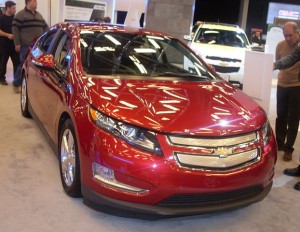 Several people believe that low-emission cars such as electric and hybrid vehicles are more costly compared to other alternatives. However, a novel study proved that green cars are actually a better option when the costs of maintenance and operation are added to a car’s buying price. The trucks and cars usually driven account for at least 20 percent of all the greenhouse gas emissions countrywide. The worrying rates of environmental pollution prompted an energy scientist, Jessika Trancik, of the Massachusetts Institute of Technology (MIT) to investigate the issue of vehicle emissions. The first question asked during the investigation was how cars and personal vehicles related to climate targets.
Several people believe that low-emission cars such as electric and hybrid vehicles are more costly compared to other alternatives. However, a novel study proved that green cars are actually a better option when the costs of maintenance and operation are added to a car’s buying price. The trucks and cars usually driven account for at least 20 percent of all the greenhouse gas emissions countrywide. The worrying rates of environmental pollution prompted an energy scientist, Jessika Trancik, of the Massachusetts Institute of Technology (MIT) to investigate the issue of vehicle emissions. The first question asked during the investigation was how cars and personal vehicles related to climate targets.
Trancik and her colleagues were interested in finding out the number and type of cars in the United States that are both climate-friendly and cost-efficient. The findings of their study were published online this week accompanied with a paper in Environmental Science and Technology journal. The results were interesting concerning the ultimate cost of green cars. Trancik said that consumers don’t have to spend a lot for green cars or lowest-emitting cars. The findings further revealed that some vehicles currently on the market, a majority of battery electric and hybrids already comply with the world emission goals that the United States has promised to meet within in the next 14 years. The cars in questions include models such as Chevy Volt, Ford’s Focus Electric, Toyota Prius, BMW i3, Tesla Model 3 and Nissan Leaf.
The study showed that a standard vehicle sold has more emissions than the 2030 target by about 50 percent. This means that there is evidently a disconnection between the type of vehicles bought and where we hope to be by 2030. For instance, falling at the other side of the chart is the Chevy Suburban, whose lifetime costs are high, while its emissions are more than the American average. There is also a wide gap with respect to the 2050 goals. This is according to Chris Gearhart, who plays the role of directing transportation research in Colorado’s Laboratory for National Renewable Energy. Chris says that his motivation is the belief that eliminating greenhouse gas emissions from the transportation industry is a key priority. He further added that Trancik’s study is interesting since it clearly illustrates the impact that individual choices have. He believes that even an average person can afford or own a Tesla. Currently, United States’ vehicles emit greenhouse gases that are sufficient to fill at least seven hundred thousand Empire State Buildings. This situation can change if people embrace green cars such as electric and hybrid vehicles.